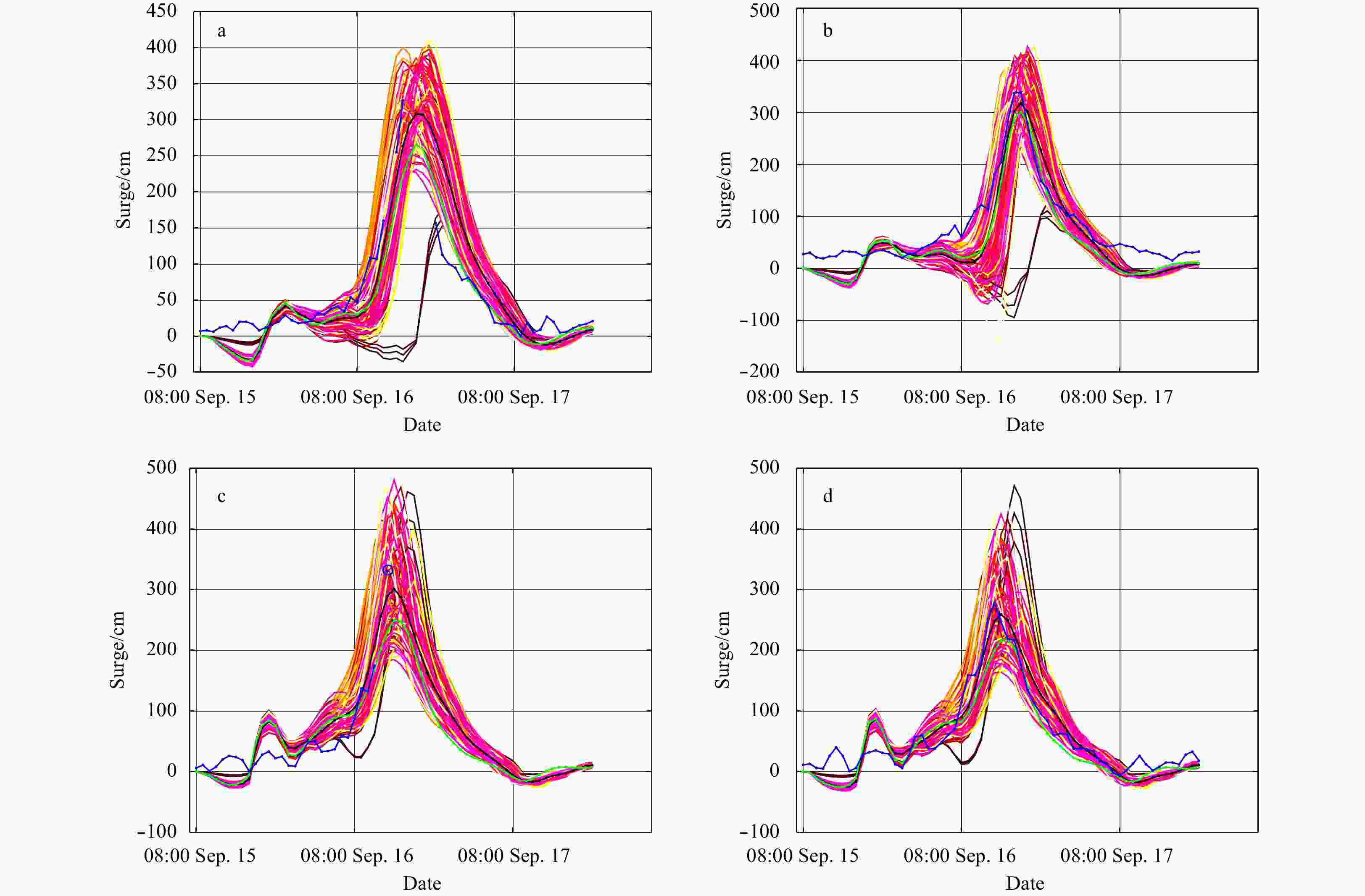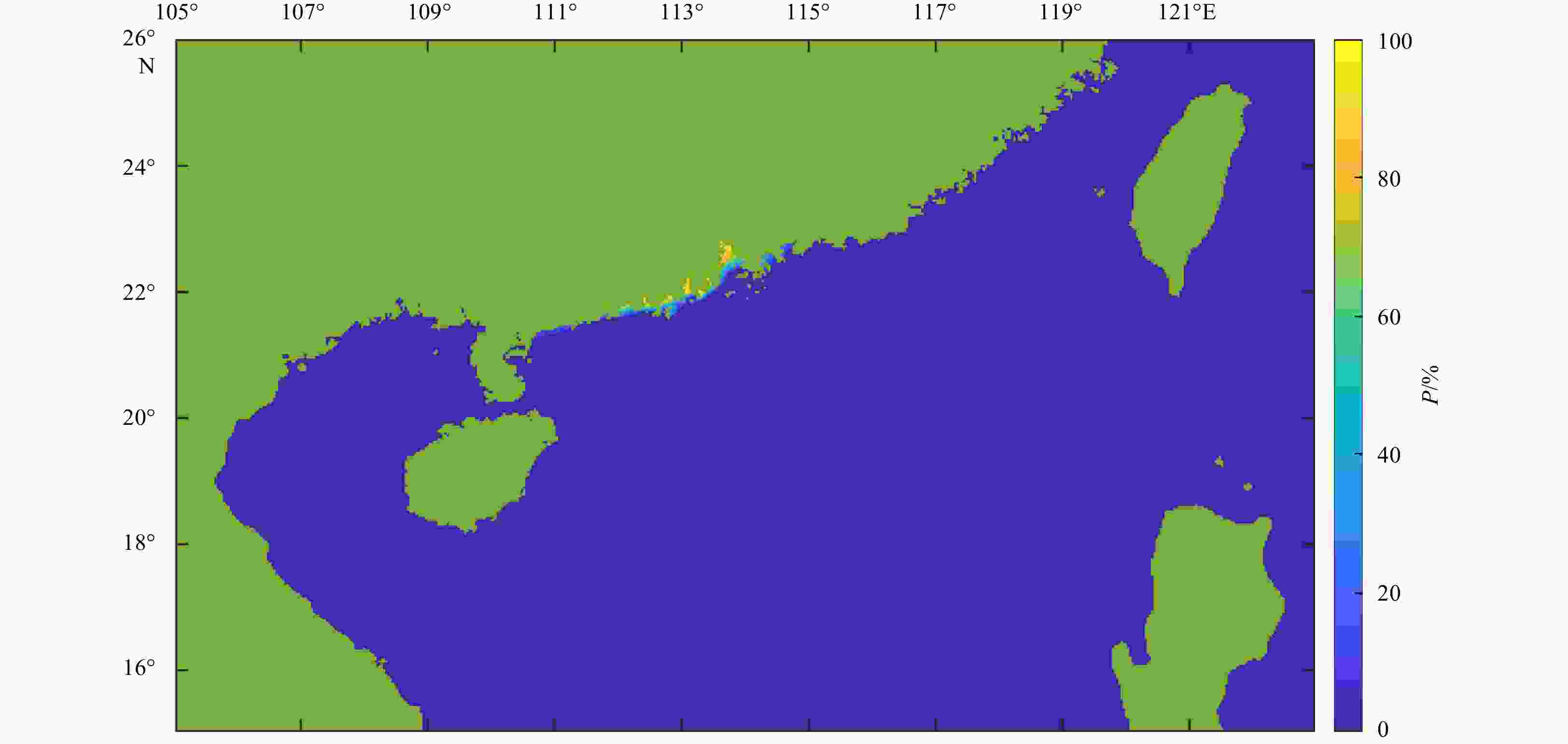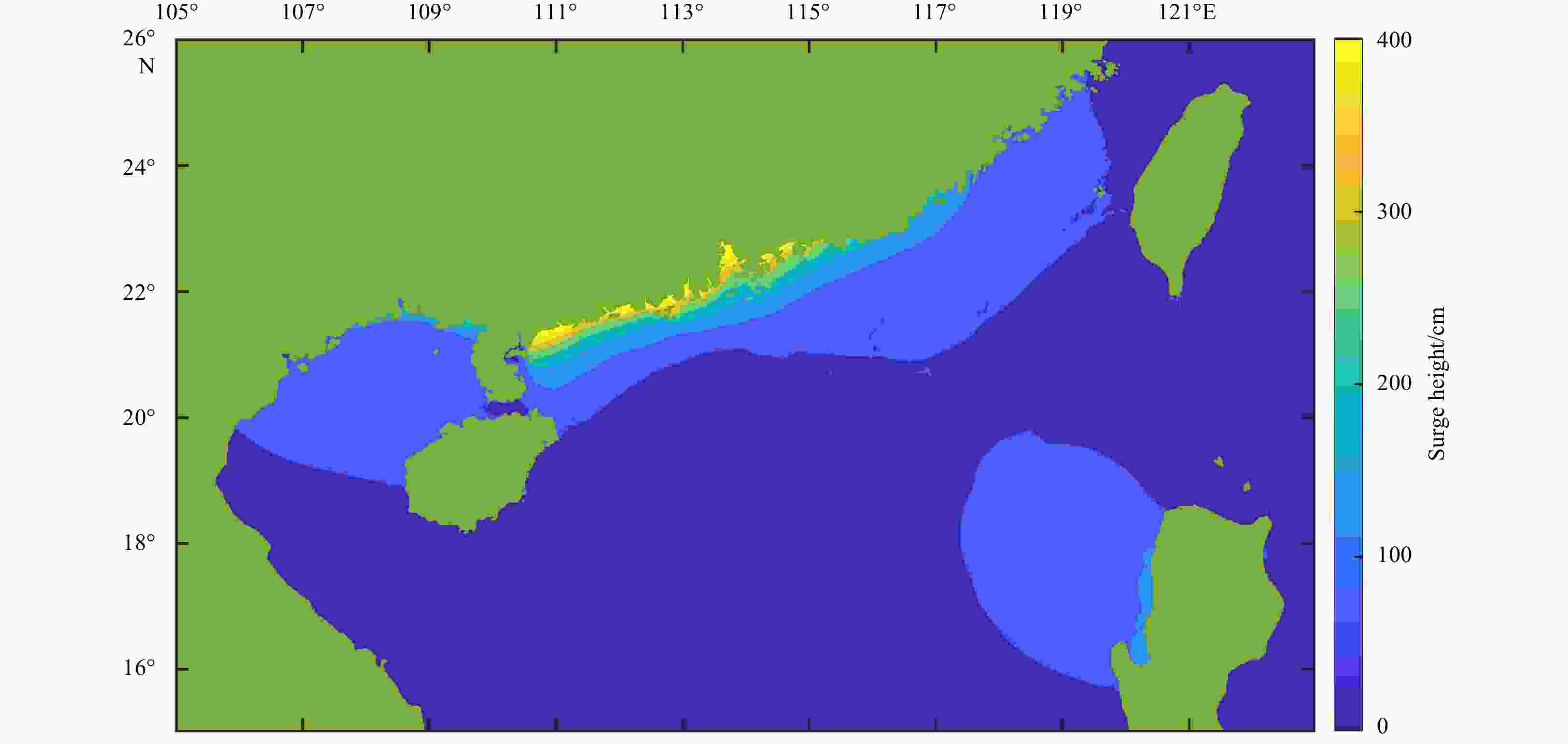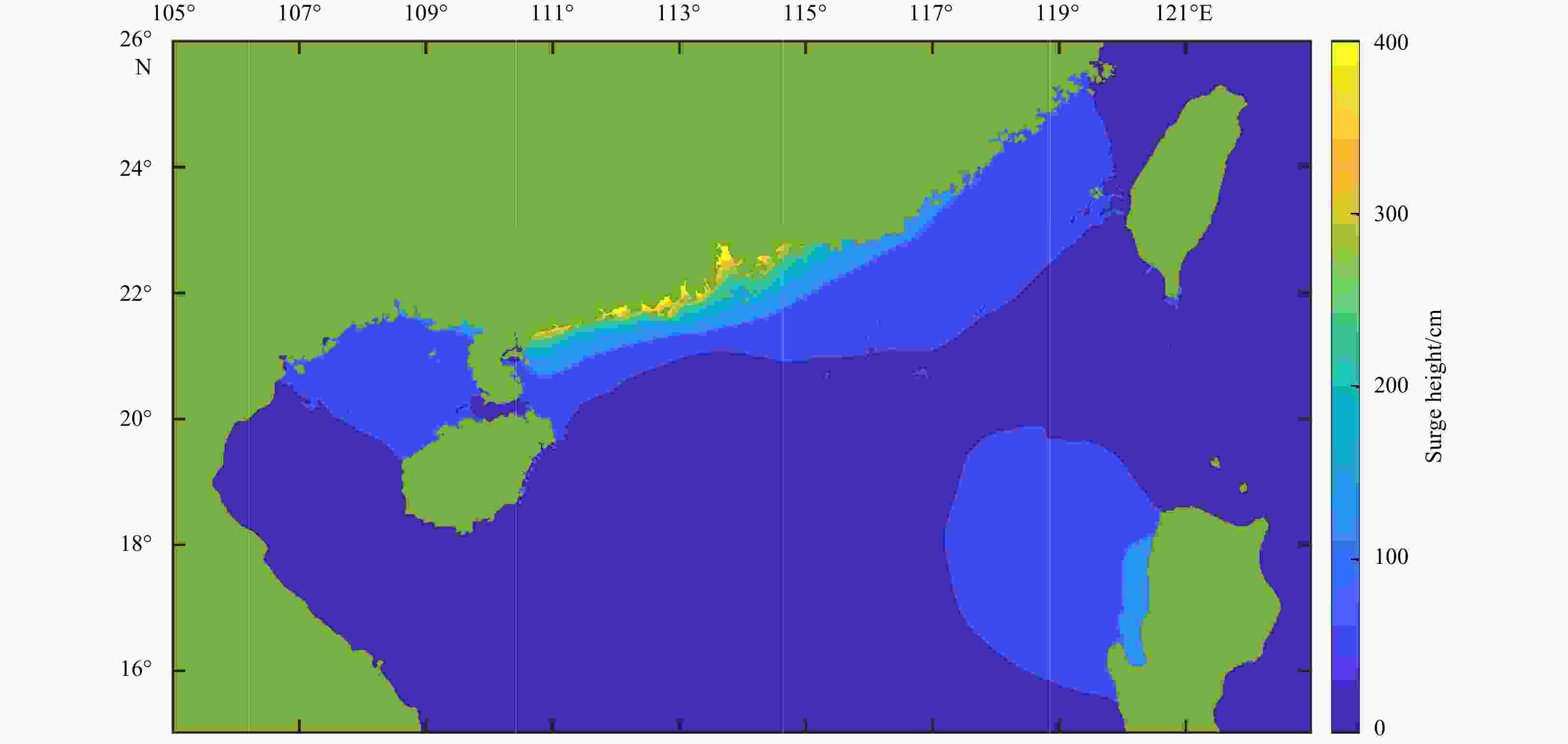-
Abstract: The accuracy of typhoon forecasts plays an important role in the prediction of storm surges. The uncertainty of a typhoon’s intensity and track means it is necessary to use an ensemble model to predict typhoon storm surges. A hydrodynamic model, which is operational at the National Marine Environmental Forecasting Center, is applied to conduct surge simulations for South China coastal areas using the best track data with parametric wind and pressure models. The results agree well with tidal gauge observations. To improve the calculation efficiency, the hydrodynamic model is modified using CUDA Fortran. The calculation results are almost the same as those from the original model, but the calculation time is reduced by more than 99%. A total of 150 typhoon cases are generated by combining 50 typhoon tracks from the European Centre for Medium-Range Weather Forecasts with three possible typhoon intensity forecasts. The surge ensembles are computed by the improved hydrodynamic model. Based on the simulated storm surges for the different typhoon cases, ensemble and probability forecast products can be provided. The mean ensemble results and probability forecast products are shown to agree well with the observed storm surge caused by Typhoon Mangkhut. The improved model is highly suitable for ensemble numerical forecasts, providing better forecast products for decision-making, and can be easily implemented to run on regular workstations.
-
Key words:
- typhoon /
- storm surge /
- ensemble forecast /
- probability forecast /
- CUDA Fortran
-
Figure 7. Comparison of storm surge between the model simulation and observed data. Blue line indicates measurement results, thin colored lines indicate ensemble storm surge results, thick green line represents modeled results based on subjective typhoon forecast, thick black line represents the ensemble mean results. a. Zhuhai Station,b. Sanzao Station,c. Yantian Station,d. Huizhou Station during Typhoon Mangkhut.
Table 1. Probability of storm surge greater than certain values
Tidal
stationObservation
/cmP/% (surge>
100 cm)P/% (surge>
200 cm)P/% (surge>
300 cm)Zhuhai 327 100 98 78 Sanzao 339 98 98 88.7 Yantian 343 100 98 52 Huizhou 278 100 88 28.7 -
[1] Amouzgar R, Liang Qiuhua, Clarke P J. 2016. Computationally efficient tsunami modeling on Graphics Processing Units (GPUs). International Journal of Offshore and Polar Engineering, 26(2): 154–160. doi: 10.17736/ijope.2016.ak10 [2] Brodtkorb A R, Trond R H, Martin L S. 2013. Graphics processing unit (GPU) programming strategies and trends in GPU computing. Journal of Parallel and Distributed Computing, 73(1): 4–13. doi: 10.1016/j.jpdc.2012.04.003 [3] Bard C M, Dorelli J C. 2014. A simple GPU-accelerated two-dimensional MUSCL-Hancock solver for ideal magnetohydrodynamics. Journal of Computational Physics, 259: 444–460. doi: 10.1016/j.jcp.2013.12.006 [4] Chauhan M S, Hammoshi M, Al-Bahri B A S. 2016. Accelerating high arithmetic intensity storm surge model using CUDA. Recent Trends in Parallel Computing, 3(2): 9–21 [5] Ding Xuelin, Chen Yongping, Pan Yi, et al. 2016. Fast ensemble forecast of storm surge along the coast of China. Journal of Coastal Research, 2: 1077–1081 [6] Dong Jianxi, Fu Xiang, Wu Wei, et al. 2008. Operational Forecast and test of the high nesolution numerical storm surge forecast model for China sea. Marine Forecasts (in Chinese), 25(2): 11–17 [7] Flowerdew J, Horsburgh K, Mylne K. 2009. Ensemble forecasting of storm surges. Marine Geodesy, 32(2): 91–99. doi: 10.1080/01490410902869151 [8] Higaki M, Hayashibara H, Nozaki F. 2009. Outline of the Storm Surge Prediction Model at the Japan Meteorological Agency. Tokyo: Typhoon Center [9] Liang Qiuhua, Xia Xilin, Hou Jingming. 2016. Catchment-scale high-resolution flash flood simulation using the GPU-based technology. Procedia Engineering, 154: 975–981. doi: 10.1016/j.proeng.2016.07.585 [10] Mel R, Lionello P. 2014b. Storm surge ensemble prediction for the city of Venice. Weather and Forecasting, 29(4): 1044–1057. doi: 10.1175/WAF-D-13-00117.1 [11] Salighehdar A, Ye Ziwen, Liu Mingzhe, et al. 2017. Ensemble-based storm surge forecasting models. Weather and Forecasting, 32(5): 1921–1936. doi: 10.1175/WAF-D-17-0017.1 [12] Sha Tianyang, Yang Guojie, Cheng Zhengquan. 2015. A brief account of the forecast products based on the forecast texts of ensemble prediction from ECMWF. Guangdong Meteorology (in Chinese), 37(1): 4–9 [13] Suh S W, Lee H Y, Kim H J, et al. 2015. An efficient early warning system for typhoon storm surge based on time-varying advisories by coupled ADCIRC and SWAN. Ocean Dynamics, 65(5): 617–646. doi: 10.1007/s10236-015-0820-3 [14] Wang Xinian. 2001. Storm surge forecast technique. Marine Forecasts (in Chinese), 19(2): 64–70 [15] Wang Xinian, Yin Qingjiang, Zhang Baoming. 1991. Research and applications of a forecasting model of typhoon surges in China Seas. Advances in Water Science (in Chinese), 2(1): 1–10 [16] Wang Peitao, Yu Fujiang, Liu Qiuxing, et al. 2010. Study of refined ensemble numerical typhoon surge forecast technology for Fujian coast. Marine Forecasts (in Chinese), 27(5): 7–15 [17] Yu Fujiang, Zhang Zhanhai. 2002. Implementation and application of a nested numerical storm surge forecast model in the East China Sea. Acta Oceanologica Sinica, 21(1): 19–31 -





 下载:
下载:
















